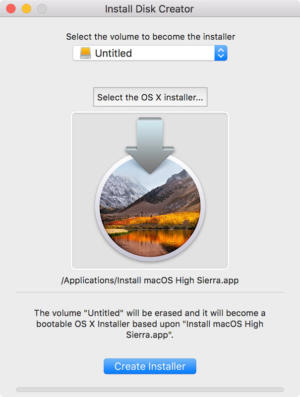
- #Boot usb on mac for os install portable#
- #Boot usb on mac for os install iso#
- #Boot usb on mac for os install windows#
The time to dd the image across will depend on the speed of the system used, USB drive itself, and USB port it’s inserted into. The dd command provides no feedback until it’s completed, but if your drive has an access indicator, you’ll probably see it flickering from time to time. Imaging the USB drive can take a good amount of time, over half an hour is not unusual, as the sample output below shows. Using the given value on macOS/OS X has produced reliable images consistently. Increasing the blocksize (bs) will speed up the write progress, but will also increase the chances of creating a bad USB drive. We will replace /dev/disk6 with /dev/rdisk6 to improve the write speeds: The following command assumes that your USB drive is on the path /dev/disk6, and you’re in the same directory with your Kali Linux ISO, which is named “”.
#Boot usb on mac for os install iso#

Double-check what you’re doing before you do it, it’ll be too late afterwards. WARNING: Although the process of imaging Kali on a USB drive is very easy, you can just as easily overwrite a disk drive you didn’t intend to with dd if you do not understand what you are doing, or if you specify an incorrect output path. Note that the USB drive will have a path similar to /dev/disk2.
#Boot usb on mac for os install windows#
If you would prefer to use Etcher, then follow the same directions as a Windows user. Once you’ve downloaded and verified your chosen Kali ISO file, you use dd to copy it over to your USB drive.

MacOS/OS X is based on UNIX, so creating a bootable Kali Linux USB drive in an macOS/OS X environment is similar to doing it on Linux. Creating a Bootable Kali USB Drive on macOS/OS X (DD) The specifics of this procedure will vary depending on whether you’re doing it on a Windows, Linux, or macOS/OS X system. (Systems with a direct SD card slot can use an SD card with similar capacity.

If you’re running under macOS/OS X, you can use the dd command, which is pre-installed on those platforms, or use Etcher.Ī USB thumb drive, 4GB or larger. What You’ll NeedĪ verified copy of the appropriate ISO image of the latest Kali build image for the system you’ll be running it on: see the details on downloading official Kali Linux images. In order to do this, we first need to create a bootable USB drive which has been set up from an ISO image of Kali Linux.
#Boot usb on mac for os install portable#
It’s portable - you can carry Kali Linux in your pocket and have it running in minutes on an available system.It’s non-destructive - it makes no changes to the host system’s hard drive or installed OS, and to go back to normal operations, you simply remove the “Kali Live” USB drive and restart the system.Our favourite way, and the fastest method, for getting up and running with Kali Linux is to run it “live” from a USB drive.


 0 kommentar(er)
0 kommentar(er)
